Unveiling the 1N5408 Diode: Power, Applications & Beyond
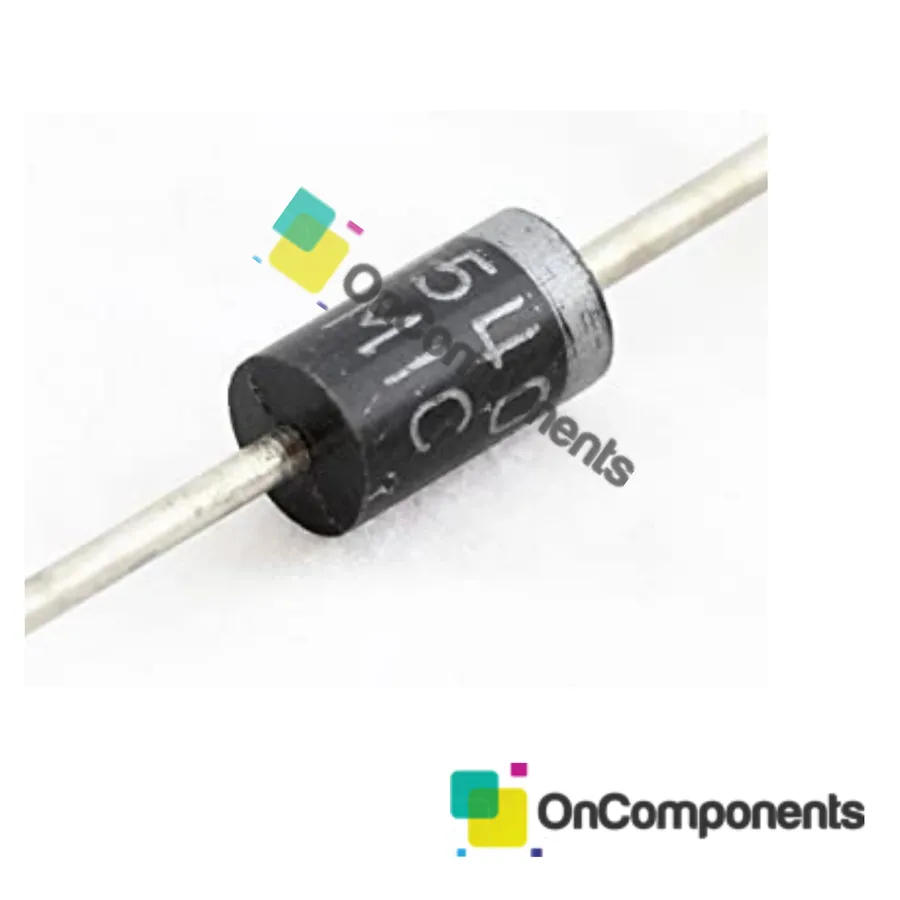
In the world of electronics, the humble 1N5408 diode stands as a workhorse, quietly enabling power conversion and circuit protection. Just like the heart valves that regulate blood flow, the 1N5408 ensures that electrical current travels in the intended direction. This article delves deep into this robust rectifier diode, examining its specifications, applications, and why it’s indispensable in numerous electronic designs. We'll bridge the gap between theory and practical use, demystifying the 1N5408 for both beginners and seasoned electronics enthusiasts.
Understanding the Basics of the 1N5408 Diode

The 1N5408 diode is a fundamental component in electronics, primarily used as a silicon rectifier. It is engineered to allow current to flow primarily in one direction, crucial for converting alternating current (AC) to direct current (DC). Understanding its structure, voltage and current handling capabilities, and how to identify its polarity is essential for effective circuit design and application.
At its core, the 1N5408 is a P-N junction diode. The 'P' side, or anode, is positively charged and accepts current. The 'N' side, or cathode, is negatively charged, and current flows out of this terminal. This asymmetry is essential for its rectifying functionality. The 1N5408 is a silicon-based device; silicon is chosen for its high temperature stability and good electrical properties. The voltage and current ratings of the 1N5408 are crucial for determining its suitability for different applications.
- Key Characteristics
The 1N5408 is a silicon rectifier diode, crucial for AC to DC conversion. It's known for its high reverse voltage handling capabilities and relatively high forward current rating compared to smaller signal diodes. - Structure
It's a P-N junction diode, where the P side (anode) accepts current and the N side (cathode) allows current to flow out. - Polarity
The cathode of the diode is typically marked by a band on the component package. This is crucial for correct circuit integration, as incorrect polarity can lead to component damage or circuit malfunction.
Key Specifications of the 1N5408 Diode
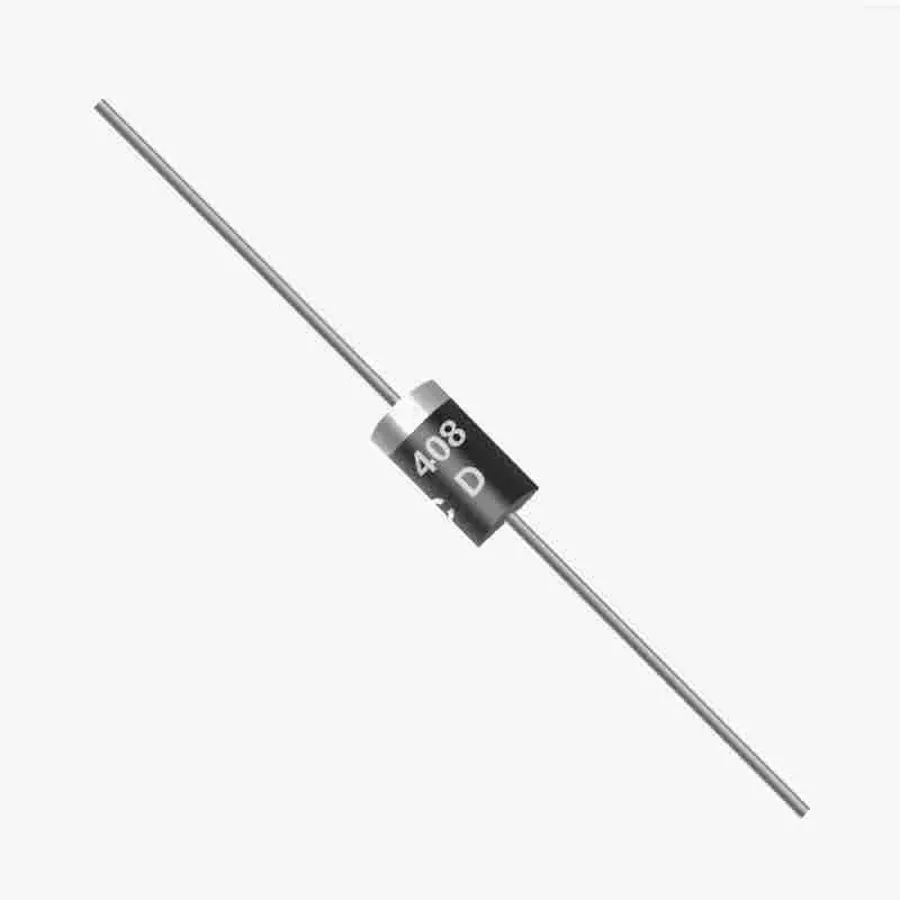
The 1N5408 diode is a robust silicon rectifier characterized by several key specifications that dictate its performance in various applications. Understanding these parameters is crucial for effective circuit design and ensuring reliable operation. These specifications include maximum current handling, voltage withstanding capabilities, and temperature sensitivities, all of which are interconnected to dictate diode performance. This section provides a detailed breakdown of these essential characteristics.
| Parameter | Value | Conditions | Significance |
|---|---|---|---|
| Maximum Forward Current (IF(AV)) | 3A | Continuous, at specified ambient temperature | Indicates the maximum continuous current the diode can handle without damage. |
| Peak Reverse Voltage (VRRM) | 1000V | Maximum repetitive reverse voltage | Specifies the maximum voltage the diode can withstand in reverse bias before breakdown. |
| Non-Repetitive Peak Forward Surge Current (IFSM) | 200A | One cycle, 60Hz | Indicates the surge current the diode can handle for a short period. |
| Forward Voltage Drop (VF) | 1.1V | At IF = 3A | The voltage drop across the diode when it is conducting in the forward direction, varies with current and temperature. |
| Operating Temperature Range | -65°C to +175°C | Junction temperature | Specifies the temperature range within which the diode can operate reliably. |
| Reverse Leakage Current (IR) | 5µA | At VR = 1000V and 25°C | The small current that flows when the diode is reverse-biased. |
It is important to note the temperature dependence of the 1N5408's parameters. For instance, as temperature increases, the forward voltage drop (VF) typically decreases, while the reverse leakage current (IR) increases. These variations can impact circuit performance, especially under extreme conditions. When designing for reliable operation, it is crucial to consider not only the absolute values of these specifications but also how they vary with temperature.
1N5408 Diode Applications: Where Is It Used?
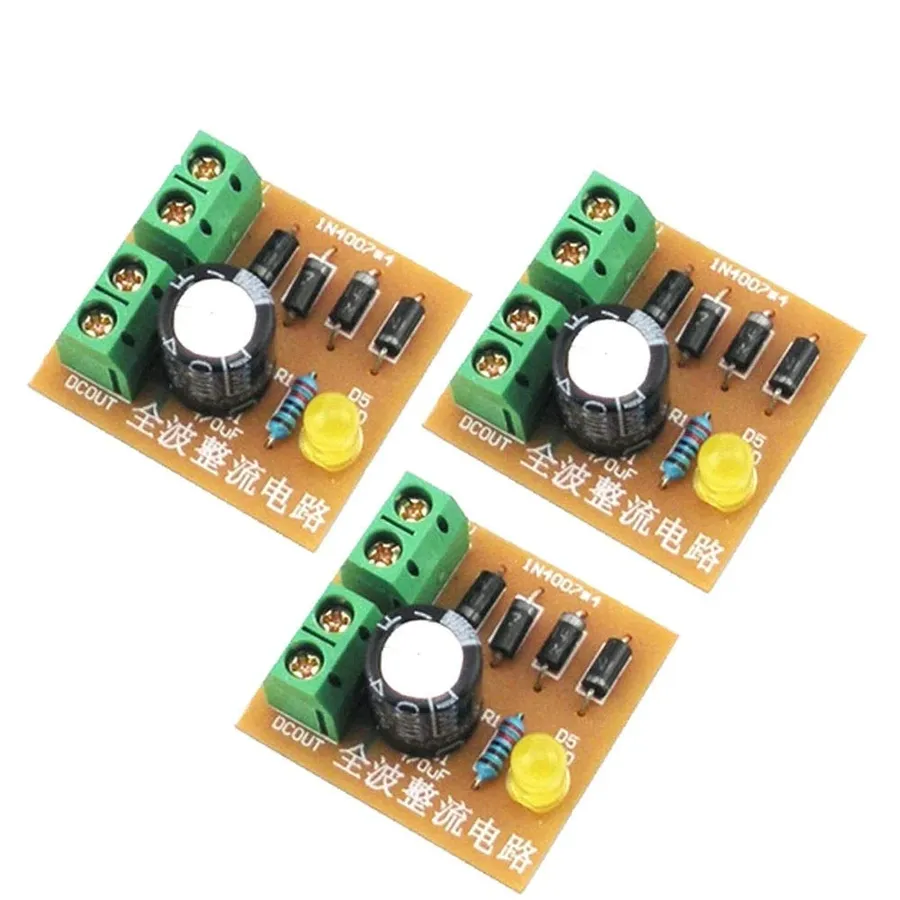
The 1N5408 diode, a robust silicon rectifier, is widely utilized across various electronic applications due to its ability to handle substantial current and voltage. Primarily designed for AC to DC conversion, its versatility extends to protection circuits and inductive load management, demonstrating its integral role in diverse electronic systems.
- Rectification in Power Supplies
The 1N5408 is commonly employed in power supply circuits to convert alternating current (AC) to direct current (DC). This is essential for powering most electronic devices, where the diode acts as a one-way valve, allowing current to flow in only one direction, thus enabling the conversion process. Its high voltage and current handling capabilities make it suitable for higher power applications. - AC to DC Conversion
In AC to DC converters, the 1N5408 diode, often used in conjunction with capacitors, plays a vital role in rectifying the AC input signal. By eliminating the negative half-cycles of the AC waveform, it contributes to producing a pulsating DC output, which is subsequently smoothed by a filtering capacitor to generate a stable DC voltage that is required by most electronic circuits. This forms the backbone of almost every power supply circuit. - Freewheeling Diode in Inductive Circuits
When inductive loads such as motors or relays are switched off, the stored energy in the inductor can generate a high voltage spike, which can damage sensitive components in the circuit. The 1N5408 acts as a freewheeling or flyback diode to mitigate this risk. By providing a path for the current to dissipate, it protects the transistors or switches from the back EMF, ensuring the stability and reliability of the circuit. - Protection Diodes
The 1N5408 diode is often used as a protection diode for sensitive components against reverse polarity or voltage surges. By placing it in a way it will conduct in reverse bias, it can redirect or short circuit any reverse current in the circuit, preventing damage from unexpected input conditions. This prevents failures due to external connection or improper use of equipment.
These applications showcase the 1N5408 diode's versatility and reliability, which make it a staple in electronics design. Its ability to operate across a wide voltage and current range contributes to its wide adoption in simple to complex applications, and it is integral to numerous electronic projects.
1N5408 Diode vs. Equivalents: Comparative Analysis
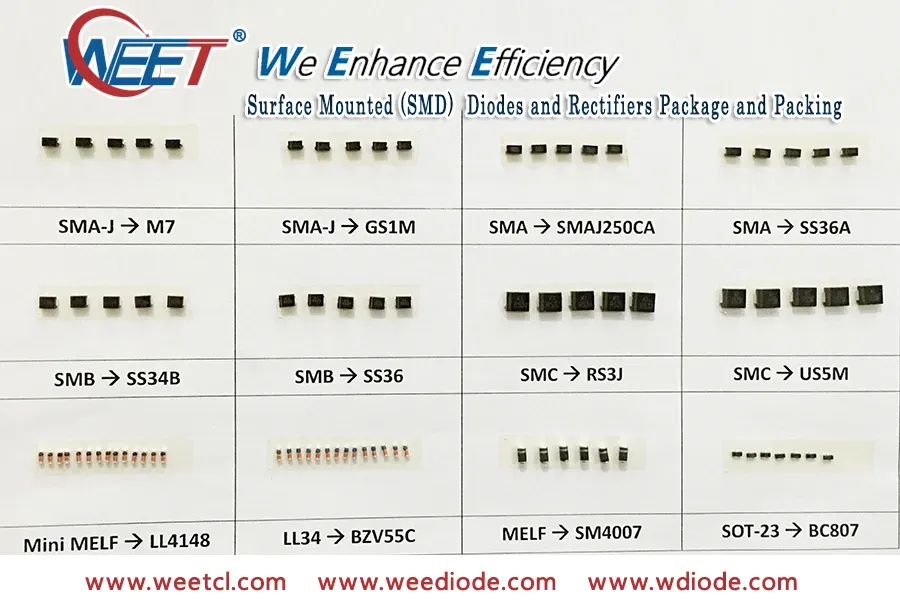
The 1N5408 diode is a popular choice for rectification due to its robust specifications, but understanding its performance relative to other diodes is crucial for effective circuit design. This section provides a comparative analysis, primarily focusing on the 1N4007, to enable informed component selection.
| Parameter | 1N5408 | 1N4007 |
|---|---|---|
| Maximum Repetitive Peak Reverse Voltage | 1000V | 1000V |
| Maximum Average Forward Current | 3A | 1A |
| Peak Forward Surge Current | 200A | 30A |
| Typical Forward Voltage Drop | 1.0V | 1.1V |
| Operating Temperature Range | -65°C to +175°C | -55°C to +175°C |
| Package Type | DO-201AD | DO-41 |
While both diodes share a similar peak reverse voltage, the 1N5408 boasts a significantly higher forward current capacity (3A vs 1A) and a much higher surge current rating(200A vs 30A) compared to the 1N4007. The 1N5408 is typically housed in a larger DO-201AD package, while the 1N4007 utilizes the smaller DO-41 package. These differences make the 1N5408 more suitable for high current applications. The typical forward voltage drop is similar, around 1 volt, which does not differ significantly between the two.
Considerations when choosing between the 1N5408 and 1N4007 depend primarily on the current requirements of the application. If the circuit demands higher current handling, the 1N5408 is preferred. However, for low current applications the 1N4007 offers a more compact package, and lower cost, making it ideal for low current applications. Understanding these distinctions is crucial for optimizing performance and reliability in practical electronic designs.
1N5408 Diode Datasheet Analysis: Decoding the Information
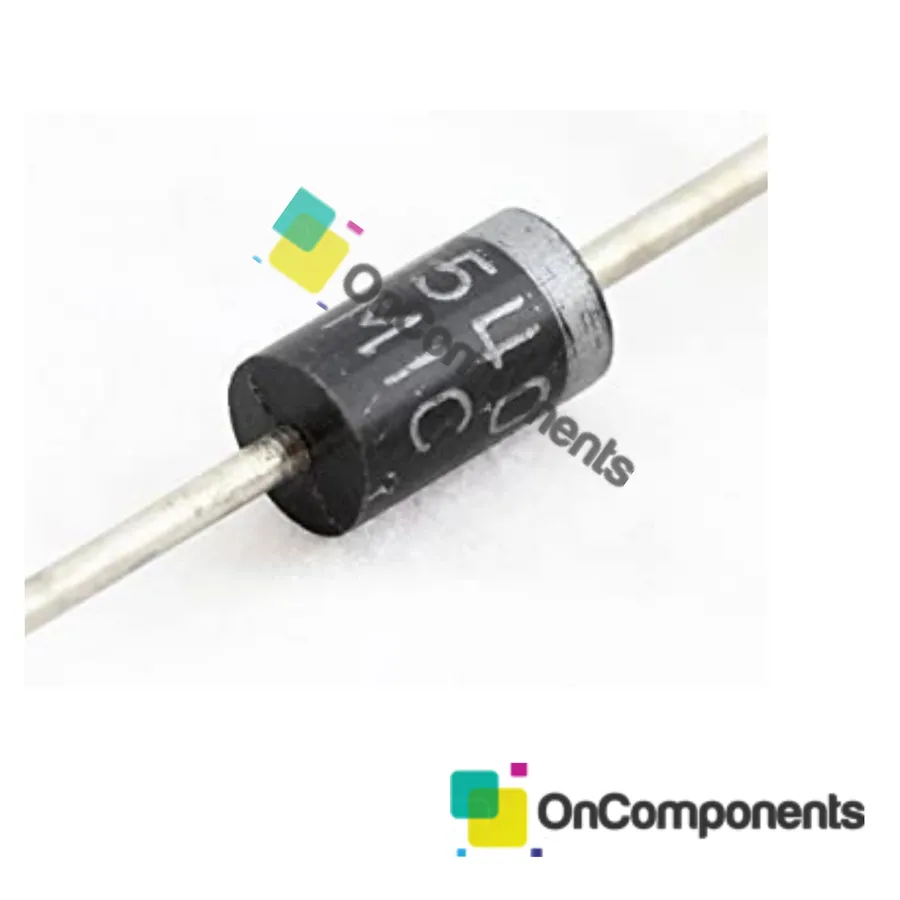
Understanding a datasheet is crucial for effectively using any electronic component, and the 1N5408 diode is no exception. This section provides a guide to interpreting the key parameters and specifications found within a 1N5408 datasheet, which are vital for ensuring proper design, reliable operation, and preventing component failures.
Datasheets provide comprehensive information about a component's characteristics, enabling engineers to design circuits that operate within the specified limits. Key areas to focus on include maximum ratings, electrical characteristics, and thermal specifications. Misinterpreting these parameters can lead to component damage or failure, so it is essential to understand each specification's implications.
| Datasheet Parameter | Description | Implication |
|---|---|---|
| Maximum Repetitive Peak Reverse Voltage (VRRM) | The maximum reverse voltage that the diode can withstand repeatedly without breakdown. | Exceeding this can cause permanent damage, leading to diode failure. |
| Maximum Average Forward Rectified Current (IF(AV)) | The maximum average current that the diode can safely handle in the forward direction. | Exceeding this can cause overheating and degradation of the diode's performance. |
| Peak Forward Surge Current (IFSM) | The maximum non-repetitive surge current the diode can handle for a very short period. | Important for protecting against inrush current, or transient pulses. Exceeding this leads to device failure. |
| Operating Temperature Range | The range of ambient temperatures within which the diode can operate reliably. | Operating outside this range can affect performance and reliability, with higher temperatures leading to faster degradation. |
| Typical Forward Voltage Drop (VF) | The voltage drop across the diode when conducting in the forward direction. | Affects power dissipation in the diode, higher Vf results in higher energy loss and heat generated. |
| Reverse Leakage Current (IR) | The small current that flows through the diode when it is reverse biased. | Can affect efficiency and is temperature dependent. Larger leakage can be indicative of a faulty diode. |
By carefully considering these datasheet parameters, engineers can design robust and reliable circuits with the 1N5408 diode. Always operate within the specified maximum ratings and understand the thermal implications to ensure the longevity and proper functioning of the diode in its intended application.
Frequently Asked Questions About the 1N5408 Diode
This section addresses common queries regarding the 1N5408 diode, offering clear and concise answers to enhance understanding and practical application. We delve into its distinctions from similar components, its classification, and its primary uses.
- What is the primary application of a 1N5408 diode?
The 1N5408 is primarily used as a rectifier diode in power supply circuits to convert alternating current (AC) to direct current (DC). Its high current and voltage ratings make it suitable for medium to high power applications. - What distinguishes the 1N5408 from the 1N5404 diode?
The key difference between the 1N5408 and 1N5404 lies in their peak reverse voltage ratings. The 1N5408 has a higher peak reverse voltage rating of 1000V compared to the 1N5404 which has a rating of 400V. This makes the 1N5408 more suitable for applications with higher reverse voltage requirements. - Is the 1N5408 diode a Schottky diode?
No, the 1N5408 is not a Schottky diode. It is a standard silicon rectifier diode. Schottky diodes have a lower forward voltage drop and faster switching speeds, but the 1N5408 is favored for its higher current and reverse voltage capacity. - What is the typical forward voltage drop of a 1N5408 diode?
The typical forward voltage drop of a 1N5408 diode is around 0.8 to 1.0 volt when conducting forward current. This voltage drop is inherent in all silicon diodes due to the PN junction behavior. - Can the 1N5408 replace the 1N4007 diode?
Yes, the 1N5408 can generally replace the 1N4007 diode, as the 1N5408 has similar characteristics, except for the current rating which is 3A vs. 1A of the 1N4007, although the 1N5408 has a higher current capacity. The 1N5408 is typically a suitable substitution in applications with similar voltage requirements but may not be necessary if the current draw is small. - What is the maximum forward current the 1N5408 diode can handle?
The 1N5408 diode is rated for a maximum forward current of 3 Amperes. Exceeding this rating can lead to overheating and potentially damage the diode. It is important to consider this rating in circuit design. - How do temperature changes affect the performance of a 1N5408 diode?
The performance of the 1N5408 diode is affected by temperature. An increase in temperature will cause the forward voltage drop to decrease, and the reverse leakage current will increase. This needs to be considered during design, especially in high-temperature environments.
Practical Tips for Working with 1N5408 Diodes
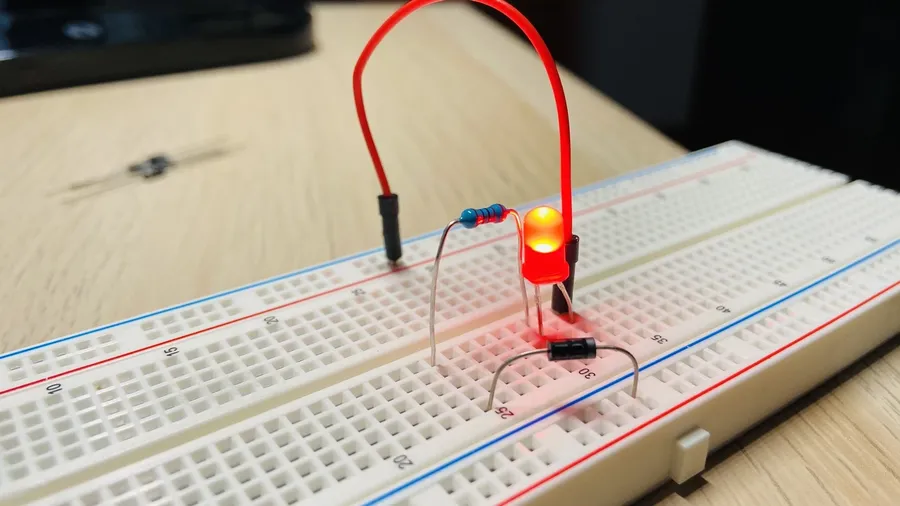
The 1N5408 diode, while robust, requires careful handling and installation to ensure optimal performance and longevity. This section provides practical advice on handling, mounting, soldering, and managing heat to prevent premature failure, particularly focusing on mitigating overheating issues.
- Handling Precautions
Avoid bending the diode's leads excessively, as this can weaken the connection to the internal silicon die and lead to premature failure. Always handle diodes by their body, not the leads, and avoid applying mechanical stress. Electrostatic discharge (ESD) precautions are important when handling any semiconductor device including the 1N5408. Use ESD-safe workstations and ground yourself to prevent damage. - Mounting Guidelines
When mounting, ensure the diode is securely attached to the circuit board. Use proper mounting techniques, such as through-hole soldering for leaded packages. Avoid direct contact with other components which could increase heat and potentially cause premature failure. Proper spacing should be considered to provide adequate air circulation for heat dissipation. - Soldering Techniques
Use a temperature-controlled soldering iron and solder quickly to avoid prolonged heat exposure to the diode. A soldering iron temperature of around 350°C (662°F) is appropriate, and the soldering process should take only a few seconds to avoid overheating. Always use appropriate solder with good flux properties to achieve a strong and reliable solder joint. - Heat Management Strategies
The 1N5408 diode, like any power diode, will generate heat during operation, particularly when conducting higher currents. In order to avoid any thermal runaway and premature failure it is extremely important to maintain the junction temperature within its specified limits. Consider using a heatsink if the diode is expected to operate near its maximum current rating, and where the ambient temperature is high. Additionally, ensure that there is sufficient air flow around the diode to dissipate heat. Always derate the diode’s current carrying capacity when operating at higher ambient temperatures, this derating is usually supplied in the datasheet for the particular diode. Refer to the thermal resistance parameters of the device when calculating the temperature rise. - Failure Modes
Common failure modes include shorts, opens, and parametric drift due to overheating, excessive reverse voltage, or physical damage. Overheating, in particular, can lead to junction degradation and ultimately to premature failure. Carefully analyse the circuit’s operating conditions to avoid any of these failure modes. Proper application of design principles are key when designing with the 1N5408 diode, paying special attention to the maximum ratings of the device. - Longevity Strategies
To ensure long-term reliability, select components that meet or exceed the application's operating requirements. Avoid operating the 1N5408 at its absolute maximum ratings and derate appropriately to allow for fluctuations in the ambient temperature and circuit component variations. Periodically inspect solder joints and the physical condition of the diode. A properly handled and mounted 1N5408 diode is a rugged and reliable device, so by implementing best practices you can ensure a long working life.
Troubleshooting Common Issues with the 1N5408 Diode
Effective troubleshooting of 1N5408 diodes involves diagnosing common failure modes such as shorts, opens, and performance degradation, using techniques like multimeter testing to identify faulty components and ensure circuit reliability.
- Identifying a Shorted 1N5408 Diode
A shorted diode will exhibit very low resistance in both forward and reverse bias, often reading near zero ohms when tested with a multimeter. This indicates a breakdown in the diode's internal structure. - Identifying an Open 1N5408 Diode
An open diode shows extremely high or infinite resistance in both directions when measured with a multimeter, indicating a break in the internal connection, preventing current flow. - Diagnosing Performance Degradation
Degradation is indicated by deviations from the datasheet specifications. This can manifest as a higher forward voltage drop than specified or increased reverse leakage current when measured with a multimeter, often due to prolonged exposure to high temperatures. - Testing with a Multimeter: Resistance Checks
Set the multimeter to resistance mode (Ohms). Measure resistance across the diode in both forward and reverse bias. A healthy diode shows low resistance (typically a few ohms to 1 kohm) in forward bias (anode to cathode) and high resistance (Megohms) in reverse bias. - Testing with a Multimeter: Diode Check Mode
Use the diode check function on your multimeter. A healthy silicon diode will show a voltage drop of approximately 0.6-0.7V in forward bias and an 'OL' or '1' reading in reverse bias. Deviations may indicate a fault. - Common Causes of Failure
Overheating due to exceeding maximum current ratings or insufficient heat sinking, voltage spikes exceeding peak reverse voltage, and physical damage are common causes. A visual inspection can also reveal burnt or cracked components.
The 1N5408 diode is a fundamental component in countless electronic circuits, showcasing its importance through its robust specifications, diverse applications, and reliability. From basic power rectification to more advanced voltage protection, understanding the 1N5408 is crucial for both hobbyists and professional engineers. Its ability to handle significant current and voltage makes it a dependable choice. By mastering its properties and potential issues, and integrating it appropriately in your circuit design, you can ensure the longevity and efficiency of your electronic projects. Its ubiquitous presence in power supplies and protection circuits reaffirms its status as a cornerstone of modern electronics.
 AnyPCBA
AnyPCBA